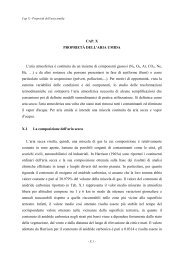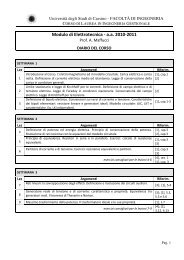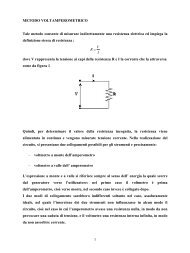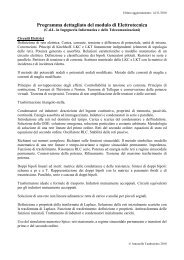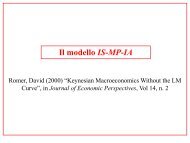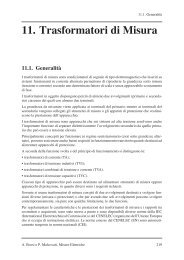Agilent Vector Signal Analysis Basics - Agilent Technologies
Agilent Vector Signal Analysis Basics - Agilent Technologies
Agilent Vector Signal Analysis Basics - Agilent Technologies
You also want an ePaper? Increase the reach of your titles
YUMPU automatically turns print PDFs into web optimized ePapers that Google loves.
Fast Fourier transform (FFT) analysis<br />
The signal is now ready for the FFT algorithm, but the way the FFT operates<br />
on the time-sampled data is not an intuitive process. The FFT is a recordoriented<br />
algorithm and operates on sampled data in a special way. Rather<br />
than acting on each data sample as the ADC converts it, the FFT waits<br />
until a number of samples (N) have been obtained (called a time record),<br />
then transforms the complete block. See Figure 1-9. In other words, a<br />
time record N samples long, is the input to the FFT, and the frequency<br />
spectrum N samples long, is the output.<br />
Sampling<br />
ADC<br />
f s<br />
. ∆ t ..<br />
.<br />
.<br />
.<br />
.<br />
.<br />
.<br />
.<br />
. .<br />
.<br />
.<br />
.<br />
. . .<br />
.<br />
.<br />
. .<br />
0 Samples N<br />
0<br />
Time record<br />
T<br />
N/f s<br />
Time<br />
record<br />
Window<br />
Time records<br />
1 2 ...n<br />
FFT<br />
Spectrum display<br />
∆ f<br />
0<br />
Lines (N/2)<br />
0 Frequency range (f s /2)<br />
f s = Sampling frequency N = Number of sample points<br />
n = Number of lines (or bins)<br />
(sampling rate) (*powers of 2)<br />
= (N/2) + 1<br />
t = 1/f s = Sample time<br />
T = Time record length<br />
= N x t = 1/ f<br />
Figure 1-9. Basic FFT relationships<br />
f = Frequency step<br />
= 1/T = f s /N<br />
The speed of the FFT comes from the symmetry or repeated sample values<br />
that fall out of restricting N to powers of 2. A typical record length for FFT<br />
analysis is 1024 (2 10 ) sample points. The frequency spectrum produced by<br />
the FFT is symmetrical about the sample frequency f s /2 (this value is called<br />
the folding frequency, f f ). Thus, the first half of the output record contains<br />
redundant information, so only the second half is retained, sample points<br />
0 thru N/2. This implies that the effective length of the output record is<br />
(N/2) + 1. You must add 1 to N/2 because the FFT includes the zero line,<br />
producing outputs from 0 Hz thru N/2 Hz inclusive. These are complex data<br />
points that contain both magnitude and phase information.<br />
In theory, the output of the FFT algorithm is (N/2) +1 frequency points,<br />
extending from 0 Hz to f f . In practice however, a guard band is used for alias<br />
protection, so not all of these points are normally displayed. As mentioned<br />
earlier, a guard band (between approximately 40% to 50% of f s ) is not<br />
displayed because it may be corrupted by alias components. For example,<br />
for a record length of 2048 samples, which produces 1025 unique complex<br />
frequency points, only 801 may actually be displayed.<br />
13





